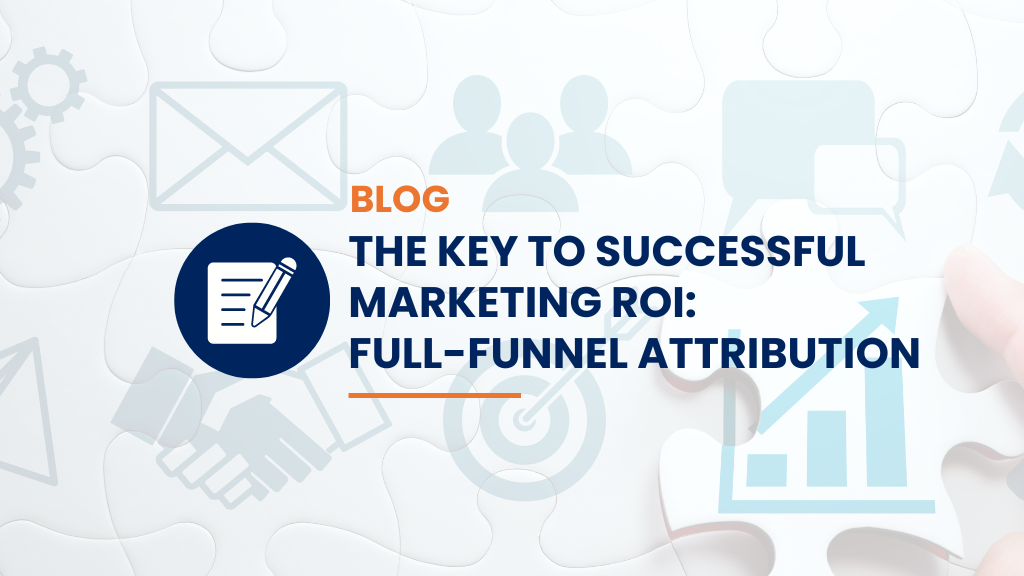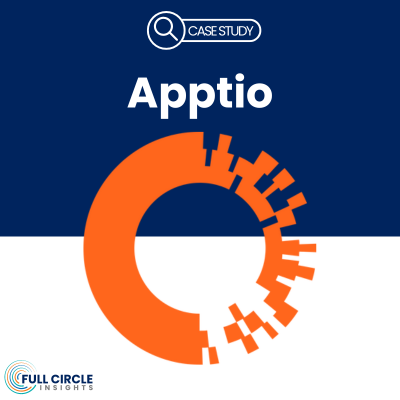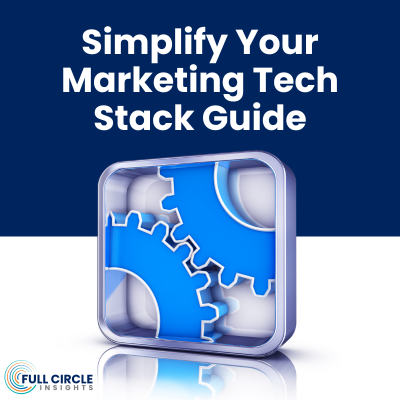How Full-Funnel Attribution is the Key to Successful Marketing ROI
In today’s rapidly evolving business landscape, marketing teams need to be able to accurately measure and attribute the success of their efforts to maximize marketing ROI (return on investment).
Full-funnel attribution has emerged as a powerful tool in the marketer’s arsenal, providing a comprehensive understanding of the customer journey and enabling informed decision-making across all stages of the marketing funnel.
In this blog post, we’re discussing how full-funnel attribution affects marketing ROI and how your team can use this attribution model to boost campaign effectiveness.
What Is Full-Funnel Attribution?
Full-funnel attribution represents a paradigm shift in how marketers approach measuring the effectiveness of their campaigns. Traditionally, marketing attribution has been segmented and siloed, focusing on individual touchpoints or channels without considering the broader context of the customer journey. This fragmented approach often results in a limited understanding of how different efforts contribute to overall marketing ROI.
In contrast, full-funnel attribution takes a holistic view of the customer journey, connecting the dots between various touchpoints and channels to provide a comprehensive understanding of the entire marketing funnel. From initial awareness to conversion and beyond, full-funnel attribution tracks and analyzes customer interactions at every stage, allowing marketers to gain insights into the effectiveness of their strategies across the entire customer lifecycle.
One of the key advantages of full-funnel attribution is its ability to account for every touchpoint along the customer journey. While traditional attribution models may focus on specific interactions, such as clicks or conversions, full-funnel attribution considers the cumulative impact of all touchpoints, both online and offline. This includes everything from social media engagement and email opens to website visits and in-store purchases.
Overall, full-funnel attribution provides marketers with a 360-degree view of the customer journey, allowing them to see the bigger picture and make more informed decisions about their marketing efforts.
Why Is Full-Funnel Attribution Important for Marketing ROI?
The importance of full-funnel attribution for marketing ROI cannot be overstated. When every dollar counts, having a comprehensive understanding of the customer journey is essential for maximizing return on investment. Full-funnel attribution provides marketers with valuable insights into how different touchpoints and channels contribute to overall campaign success, allowing them to allocate budgets more effectively and optimize strategies for maximum impact.
One of the key benefits of full-funnel attribution when it comes to marketing ROI is its focus on outcome-based metrics. Instead of solely relying on top-of-the-funnel metrics such as impressions or clicks, marketers can shift their focus to outcomes that truly matter, such as lead generation, conversion rates, and customer lifetime value (CLV). By analyzing these metrics in the context of the entire customer journey, marketers can identify which strategies are driving the most meaningful results and prioritize investments accordingly.
For example, suppose full-funnel attribution data reveals that a company’s LinkedIn ads are generating significantly higher conversion rates compared to its direct mail outreach. In that case, the marketing team can reallocate some of the direct mail budget towards LinkedIn ads to maximize marketing ROI. This data-driven approach allows marketers to make informed decisions about where to invest their resources, ensuring that every dollar spent delivers the highest possible return.
Furthermore, full-funnel attribution facilitates collaboration between marketing and sales teams by breaking down organizational silos and fostering alignment towards common goals. By sharing insights and data across departments, businesses can create a more cohesive and coordinated approach to customer acquisition and retention. For example, marketing teams can provide sales teams with valuable insights into which leads are most likely to convert, allowing sales reps to prioritize their efforts accordingly.
How to Boost Marketing ROI With Full-Funnel Attribution
Now that you understand how full-funnel attribution contributes to marketing ROI, let’s explore practical strategies for leveraging this attribution model to effectively move the needle. Consider the following strategies:
- Investing in the right tools and technology
- Defining clear goals and KPIs
- Aligning marketing and sales efforts
- Iterating and optimizing continuously
- Focusing on customer experience
1. Invest in the Right Tools and Technology
Implementing a robust attribution platform is essential for tracking and analyzing customer interactions across the entire funnel. From marketing automation systems to advanced analytics platforms and Salesforce integrations, investing in the right technology infrastructure can provide the insights your team needs to drive informed decision-making.
2. Define Clear Goals and KPIs
Before launching a full-funnel attribution strategy, it’s crucial to define goals and identify key performance indicators (KPIs) that align with overall business objectives. Whether the goal is to increase lead generation, improve conversion rates, or boost CLV, having clear benchmarks in place will help guide decision-making and measure success.
3. Align Marketing and Sales Efforts
Collaboration between marketing and sales teams is essential for effective full-funnel attribution. By aligning strategies and sharing data, businesses can ensure that marketing activities are supporting sales goals and vice versa. Regular communication, collaboration, and data sharing between departments can help identify opportunities for optimization and improvement.
4. Iterate and Optimize Continuously
Full-funnel attribution is not a one-time exercise, but rather an ongoing process of analysis and optimization. By continuously monitoring performance metrics and iterating on strategies, businesses can identify areas of improvement and make data-driven adjustments to maximize ROI.
5. Focus on Customer Experience
Ultimately, the goal of full-funnel attribution is to enhance the overall customer experience to keep customers coming back for more. By understanding the customer journey and tailoring marketing efforts to meet customer needs at each stage, businesses can build stronger relationships, drive loyalty, and ultimately increase lifetime value.
Wrapping Up: Marketing ROI and Full-Funnel Attribution
Full-funnel attribution is a powerful tool for maximizing marketing ROI in today’s competitive landscape. By providing a comprehensive view of the customer journey and enabling informed decision-making, full-funnel attribution can help marketing teams allocate resources more effectively, optimize strategies for maximum impact, and ultimately drive sustainable growth and success.



